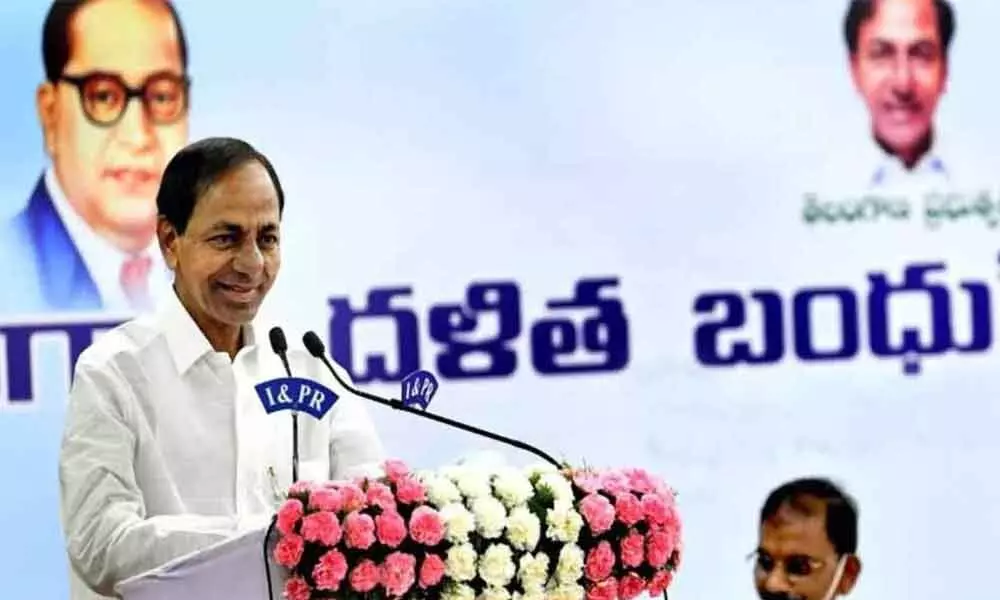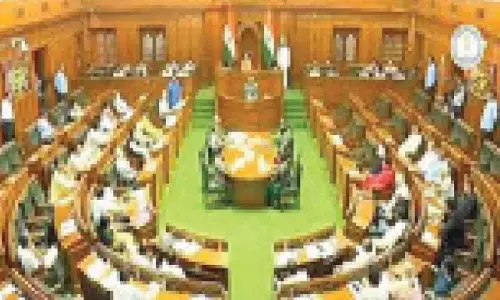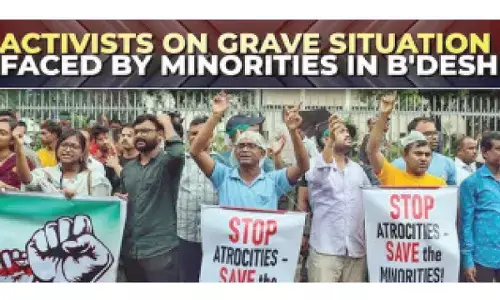Dalit Bandhu: Challenges of exclusion and inclusion

Dalit Bandhu: Challenges of exclusion and inclusion
The governments in developing countries are increasingly coming out with socio-economic assistance programmes for poor and disadvantaged sections of their populations.
The governments in developing countries are increasingly coming out with socio-economic assistance programmes for poor and disadvantaged sections of their populations. World Bank report, "The State of Social Safety Nets" find that up to 171 developing countries are implementing at least one type of Direct Cash Transfer Benefits (DCTB) assistance programme. Nobel laureate economists Abhijit Banerjee and Esther Duflo suggest such programmes in their book, "Poor Economics: Radical Rethinking of the Way to Fight Global Poverty" to overcome poverty in developing countries and empower the poor and disadvantaged groups.
Brazil, in the mid-1980s implemented assistance programmes described above, and it is among the first countries to have done so. Following Brazil's success, these programmes spread to other Latin American countries, Caribbean Countries, and Sub-Saharan African Countries from the 1990s. A little later, Asian countries such as Indonesia and India also introduced various assistance programmes. Particularly in India, the State Governments and the Union Government rolled out such programmes to fulfil the commitments embedded in the Directive Principles of State Policy and the Fundamental Rights provided in the Constitution of India.
In addition, the governments also needed to act on the commitments made to the international community on the Millennium Development Goals (MDG). The assistance programmes in India cover both promotional economic security as well as protective social security. The recent initiative of the Telangana Government's flagship programme "Dalit Bandhu" can be viewed and understood in this historical background. Dalit Bandhu is the biggest cash transfer scheme in India. The scheme aims to cover seventy-lakh Scheduled Caste (SC) families in the state with an estimated budget of Rupees 1.7 Lakh Crores.
Besides being the most significant money transfer scheme in the country, providing ten lakh rupees to each beneficiary family, Dalit Bandhu has distinct features compared to other such programmes. Dalit Bandhu does not seek any bank guarantees from the beneficiaries, unlike other similar programmes. It is also not a loan. Hence, the beneficiaries are not obligated to repay the amount they receive under the scheme. Another feature is the absence of intermediaries, as the eligible beneficiaries will receive the assistance amount directly in their bank accounts.
The scheme's uniqueness further extends to the government's plans to create the "Dalit Security Fund" – a corpus to meet any adversities the beneficiaries face. The District Collectors, along with a committee of beneficiaries, will be managing the corpus fund. Furthermore, all the beneficiaries would be provided with an identity card with an electronic chip so that the government can monitor the scheme's progress.
Why only Dalits? The Dalits are among the poorest communities in the state and the country. The earlier programme specifically aimed at them, such as the "Three-Acre Land Distribution scheme," could not make any significant inroads due to inherent problems associated with the non-availability of lands in the villages and other tricky issues related to them (such as with the land acquisition process). Moreover, the state's largest direct cash transfer programme, the "Raithu Bandhu," only marginally benefits the SCs owing to the historically "non-land owning" nature of these communities, considered to be the largest group of landless labour in rural areas.
Therefore, Dalit Bandhu aims to overcome the problems encountered during the administration of earlier schemes. The government, in the future, can consider extending similar schemes to the Denotified Tribes/Nomadic and Semi Nomadic and Most Backward Class communities of the state, as they are equally poor and disadvantaged.
How can the Dalit Bandhu succeed in achieving its objectives of empowering and enabling entrepreneurship among Dalit families? This would depend on the long-term political will of the ruling government and its administrators to implement the scheme beyond electoral perspectives and actively address the problems which could emerge in the implementation processes. The scheme begins with a thirty-wide range of choices for the beneficiaries in rural, semi-urban and urban areas. The items listed can be broadly categorized into three types – production-oriented, marketing-oriented, service-oriented, and the combination of all three. All these require inclusiveness and cooperation on the part of market and society at large.
Across the world, Direct Transfer Benefits schemes are employed to break the vicious circle of poverty and realize social equity and human capital enhancement. The whole mechanism is a thrust towards building structural stability in societies. This is also true in India and the case of Dalit Bandhu. The Indian scenarios, however, present complex issues. Undertaking of entrepreneurship and enterprise work by Dalit families is not easy, particularly in rural and semi-urban areas. Despite the rhetorical saying in Telangana that all communities call each other using their relationship tags in the rural areas, the practice of exclusion of Dalits by the non-Dalits is still prevalent in rural areas. The contemporary realities also present the stories of success where economic and entrepreneurial development leading to changing the attitudinal aspects of exclusion and hitherto disadvantaged sections carving their own spaces of social inclusion.
Further, existing competition in the relevant business sectors could be significant challenges encountered at the ground level. Hence, the problem is not with the inputs and supply side of money transfer, but provisioning to address the demand-side constraints – translating money into concrete and workable outcomes.
To conclude, these schemes are evolving projects, and they need to be closely watched and scrutinized to track accruing issues. As with any scheme or project, the Direct Transfer Benefits schemes like Dalit Bandhu also come with their prospects and concerns. What is then required is a systematic and periodic appraisal to ensure efficient roll-out of the Dalit Bandhu – in terms of costs, benefits, and issues arising out of its implementation and the mechanisms employed to address them.
(The author is Professor of Political Science (retd), Osmania University)














